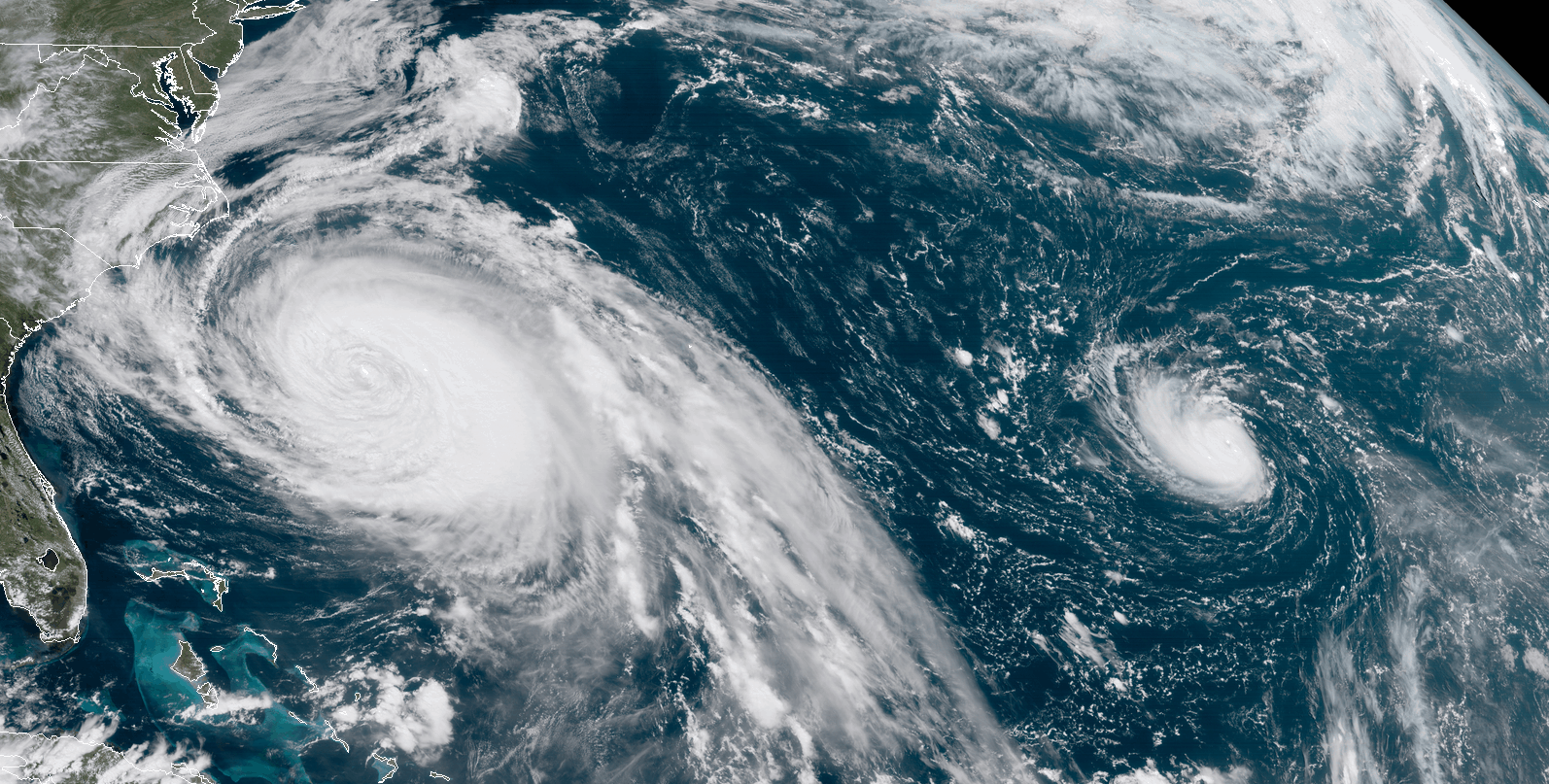02 May Flood Damage in Virginia: What you need to know!
Think of flooding like a nearly full bathtub: when the water level increases, even a bit higher, it overflows. The sea level around coastal areas in Virginia has slowly risen over the years and is now overflowing more often into our streets during high tides and rainstorms.
Just Under 5 Inches Of Sea Level Rise Has Led To 250% More Flooding Since 2000.1
When the ocean rises high enough, high tides cause flooding even on sunny days. Even though the sea level has only risen by a few inches, tidal flooding has increased over 200% on average, nationally.2 Because certain causes, like changes in the Gulf Stream or land sinkage, impact coastal areas differently, the change in flooding varies by location. In Hampton Roads, even though the sea level has only risen a few inches, flooding has gone up by 250% since 2000.3 This is widespread: in Portsmouth, 1 in 3 people have reported that they experience flooding a few times a year.4
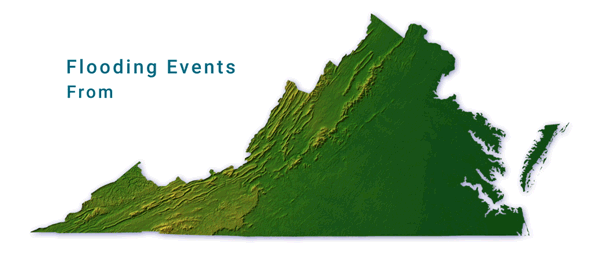
HIGHER SEAS, HIGHER TIDES
Since the ocean is 14 inches higher than it was in 19505, basic high tides turn into floods. It’s like a bathtub filled close to the top: a small increase, like a king tide (extreme high tide), can push the water over the edge and into the streets. As the sea level continues to rise, the bathtub is even fuller, causing higher flooding more often.
King Tide 1950 - 2018
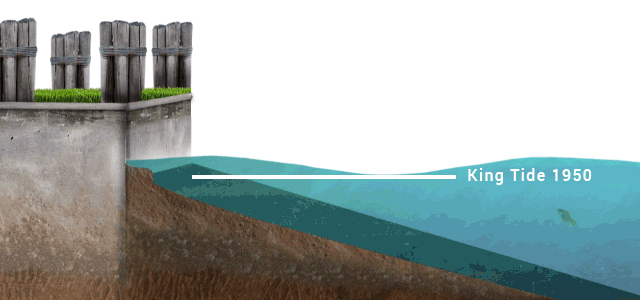

MOST FLOODING HAPPENS DURING KING TIDES
King tides are unusually high tides that are created during months when the moon aligns with the sun. The combined gravitational pull of the moon and the sun creates much higher tides, called king tides. In places like Southeast Florida, king tides can be more than a foot higher than normal. Add that to the 14 inches of sea level rise since 1950 and you end up with flooding even on sunny days.
FLOODING IN VIRGINIA, EVEN WHEN THERE IS NO RAIN
Drainage systems are designed to channel excess rainwater from the streets and drain it into the sea. But with the pressure from rising sea levels and higher tides, seawater can get pushed into these pipes and spill out into the streets. This causes flooding even on days without rain.
What’s At Risk Of Flooding?

Flooding can swamp low-lying roads, making your commute difficult or impossible.

High seas mean more underground pressure on sewage systems. Sewage flooding can be a costly and smelly problem as well as a health hazard.

Storm surges or flooding can damage the underside of your car or the first level of your home.

Flooding can impact critical community resources such as neighborhood schools and hospitals.

The ocean is salty, and as it rises higher, that salty water sometimes will mix with drinking water, ruining water wells.

Rising seas increase the speed of beach erosion, pulling more sand from the beach into sea. Replacing the sand is possible, but expensive.
Implementing Solutions
We Can Take Action To Protect Our Coastal Communities
Flooding Does Not Have To Be A Way Of Life For Coastal Communities
Flooding due to sea level rise is a big challenge, but there are solutions to keep our coastal communities safe. Individuals, mayors, governors, and Congress can work together to build protections before flooding, to build back stronger after flooding, and to create plans that future-proof our communities.

Individual Solutions
Individuals can take steps to protect their homes and property from flood damage and urge local officials to take action to keep their communities safe.

Local Solutions
Local officials can prioritize sea level rise and take action locally to protect the community, as well as coordinate with state and federal officials for practical solutions.
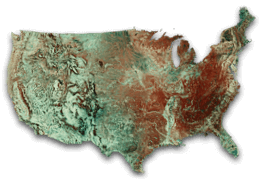
State & Federal Solutions
State and federal officials must help fund practical community solutions and incentivize smart planning in state and federal programs.
INDIVIDUAL SOLUTIONS
YOU CAN TAKE ACTION TO PROTECT YOUR HOME FROM FLOODING

While these steps are effective, they can also be expensive and time-consuming. Permanent solutions require action at the local, state and federal levels to keep flood water out of our streets and homes.
Individuals can play an important role to inform their local officials of the risks they face from flooding and support local actions that protect the community and lower flood insurance premiums.
Get smart on your flooding risk
Insure against the risk of flooding!

Make changes to protect your home
Buying Flood Insurance
Since typical homeowners’ insurance does not cover damage from flooding, it makes buying flood insurance a smart bet for many homeowners – even outside of FEMA’s designated flood zones. Flood insurance premiums can be reduced when the community takes action to decrease its overall risk and when individuals take steps to make their homes safer.
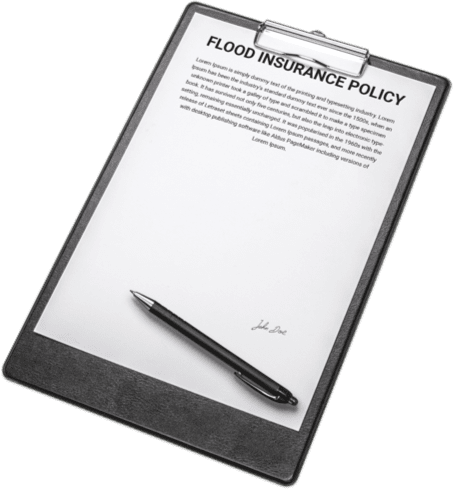

RAISING THE EXPENSIVE STUFF
Homeowners experiencing repeated flooding can raise HVAC systems, plumbing, and electric meters currently on their basement or ground level to above flood levels. This can prevent future damage to expensive systems and could reduce flood insurance premiums as well.
ELEVATING HOUSES
Houses can be raised above flood levels by using six-foot tall wooden stilts or concrete blocks. And even if the house won’t flood, the driveway and the roads around it still may. It is easier for a new home to be built higher, but existing homes can also be raised. Often, rebuilding happens when FEMA grants money after a disaster like Hurricane Andrew. These grants can often cover the majority of the cost of rebuilding.
RELOCATING
For houses that are in areas of extreme flooding, one option is to relocate to higher ground. To relocate, a house is lifted off its foundation, hauled to a new site, and lowered onto a new foundation.
LOCAL SOLUTIONS
CITIES NEED TO TAKE THE LEAD TO PROTECT AGAINST FLOODING
 We Can Take Action To Protect Our Communities
We Can Take Action To Protect Our Communities
Lasting solutions require action at the individual, local, state and federal levels working together.
With bold leadership and smart planning, communities can limit the damage from flooding and protect their schools, hospitals, and roads, as well as the local economy.
Local action can also lower the cost of homeowner’s flood insurance premiums, helping them to save hundreds of dollars each year. While local communities are the first line of defense, they need support from the state and federal level to be successful.
Communicating the risks of flooding
Creating a basic plan for critical infrastructure

Beginning to take immediate action to lower flood insurance premiums

Building Seawalls
Building Seawalls New York City is building a $335 million flood wall in Manhattan.
Seawalls are built on the coast to decrease flooding from tides and storms. They are often built to a height of five to six feet above sea level. To reduce flooding, old seawalls will need to be repaired and raised higher as the seas rise. Raising seawalls by 12 inches costs about $60 per foot. New seawalls often cost $600 to $2,000 per linear foot.
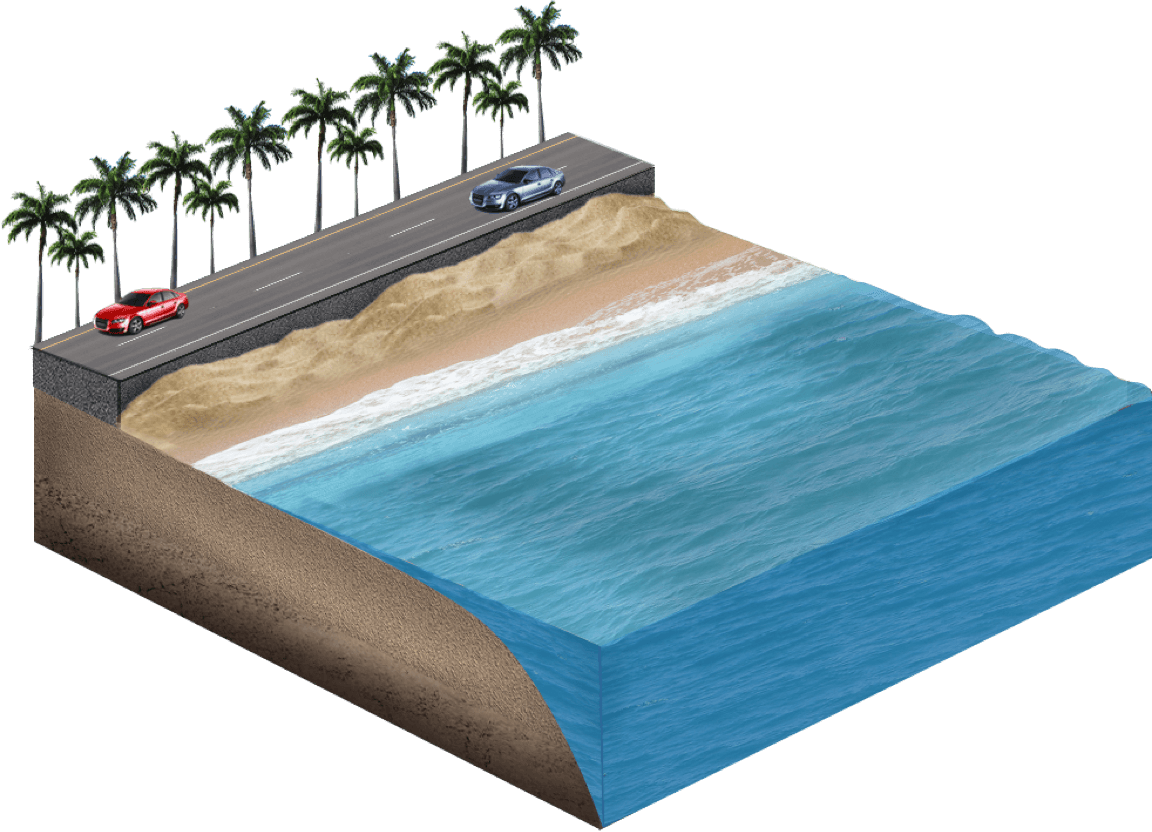
Raising Roads
Miami Beach is raising its roads by two feet at a cost of roughly $2 million per
Raising roads above sea level can help drain water and reduce tidal flooding. In order to make sure that higher roads don’t channel flood waters to homes and stores at lower elevations, cities often use stormwater pumps to remove this excess water.
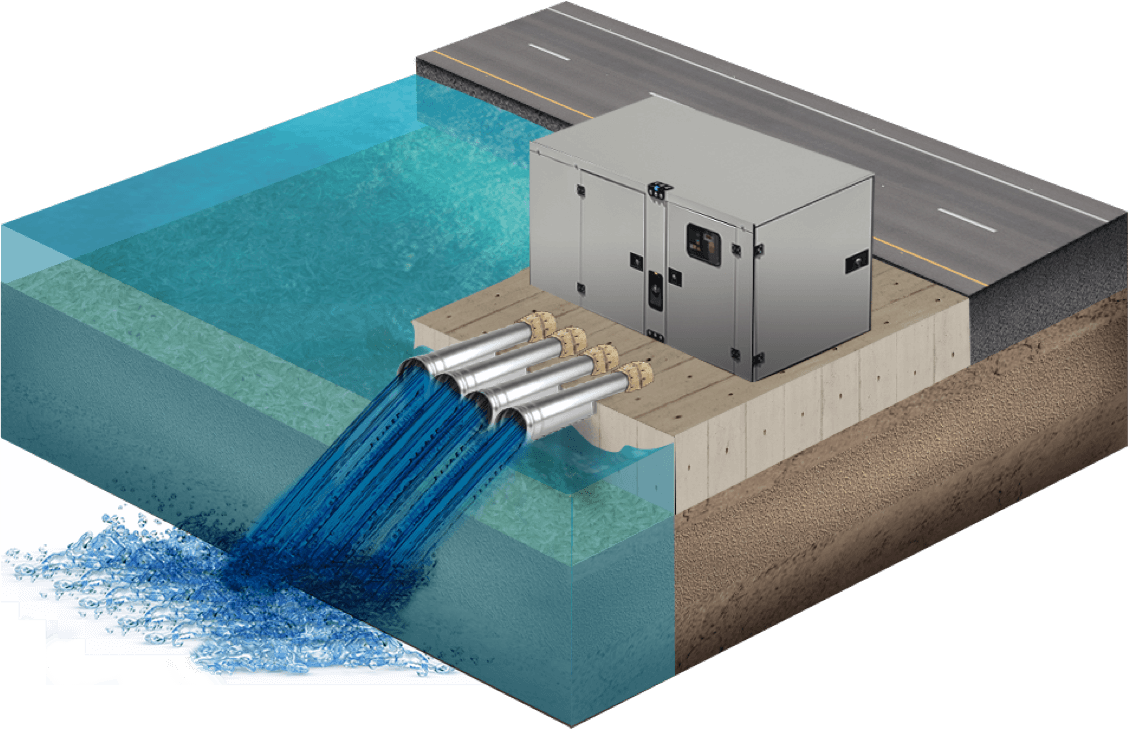
Building Stormwater Pumps
Norfolk, Virginia needs $70 million for pumps and drains by Ohio Creek
With higher seas, water doesn’t drain out as easily. Pumps can speed up the process of getting water out of the streets by vacuuming up the flood water and releasing it back into the sea.
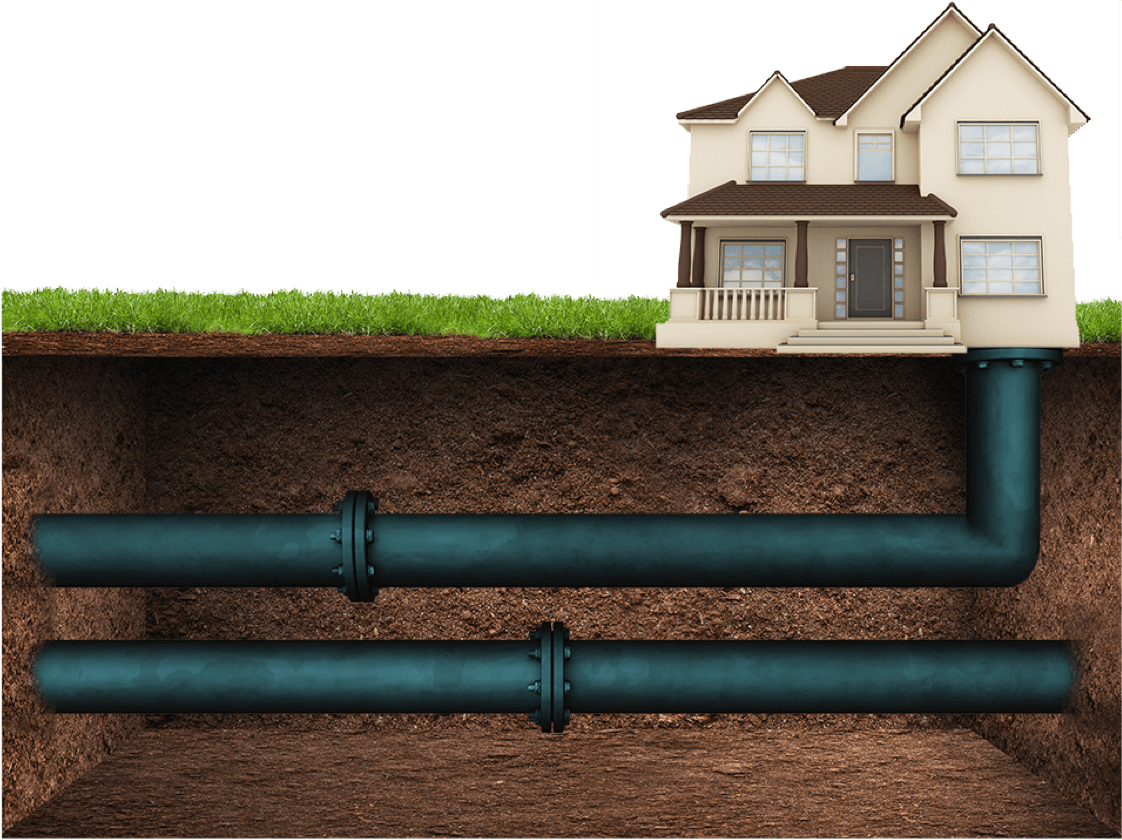
Upgrading Sewage Systems
Florida’s Broward County has spent over $250 million to eliminate septic tanks
Flooding can disrupt sewage systems and in particular, threaten septic tanks. Since saltwater is corrosive, it can break tanks and cause sewage to spew out, creating a smelly problem as well as a health hazard. Towns can upgrade sewage systems so that stormwater doesn’t seep into pipes, upgrade septic tanks, or replace them with sewer lines for about $15,000 per replacement.

Using Beaches As Barriers
Norfolk has planned a $18.4 million project to engineer a beach at Ocean View to reduce flooding. `{`6`}`
Beaches and dunes can act like a natural wall that reduces the impact of storm surges. The bigger the beach, the more water it stops from reaching homes and roads. Towns can add sand to make beaches bigger or to protect them against erosion. Using this type of natural infrastructure can protect against flooding while maintaining beaches for the community to enjoy.
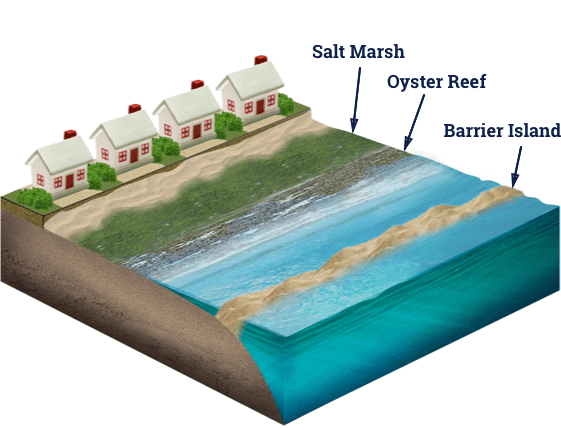
Creating Natural Infrastructure
Palm Beach County is spending $17 million to create mangroves, oyster reefs, marsh and seagrass habitats on 70 acres of land.
Coastal communities can restore natural infrastructure that can act as a buffer against storms and coastal flooding. Natural structures such as barrier islands, oyster and coral reefs, mangroves, seagrass and salt marshes can work in unison with built infrastructure, such as seawalls, to absorb storm surges. These projects are often cost-effective and can improve the natural environment for the community. `{`8`}`
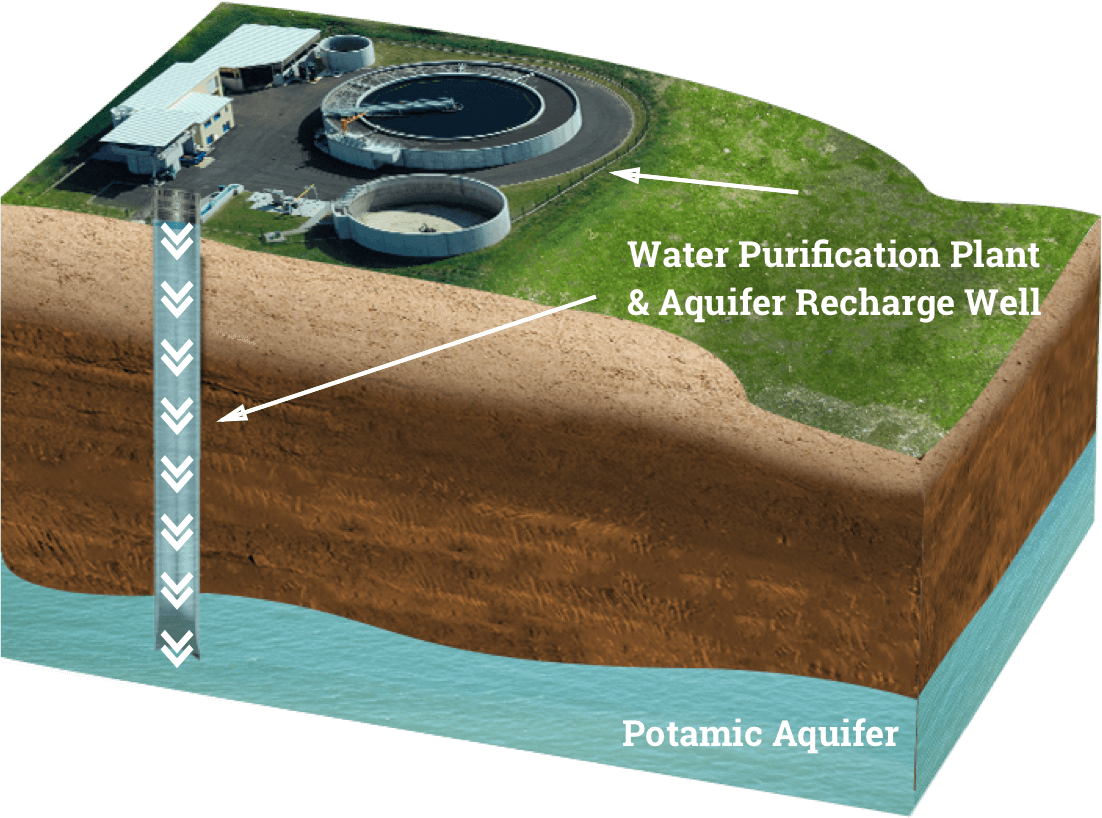
Slowing Land Sinkage
Hampton Roads Sewage District has planned a $25 million pilot project to inject water underground to slow land sinkage. The project budget could increase to $1 billion.
In places like Hampton Roads, the land is sinking in part because so much groundwater has been pumped out that the land is caving in to fill the empty space. Towns can slow down land sinkage by limiting further groundwater pumping and initiating pilot projects to reverse land sinkage. In Hampton Roads, a pilot project called SWIFT will begin experimenting with injecting a million gallons of purified wastewater in the ground per day, starting in 2018.
STATE AND FEDERAL SOLUTIONS
Sea Level Rise Flooding Is Already Impacting Our National Security, Our Economy, And Our Citizens Up And Down The Coast
 What state and federal actions are needed to fix our flooding
What state and federal actions are needed to fix our floodingThis national challenge must be met with national solutions. State and national action is critical to give coastal communities the tools they need to protect themselves and the military bases, ports, and highways that support the rest of the country.
Communicating the risks of flooding
Creating a basic plan for critical infrastructure

Beginning to take immediate action to lower flood insurance premiums
National And State Officials Can Take Four Actions To Empower Coastal Towns To Tackle Sea Level Rise Flooding.
Increase Funding For Local Infrastructure
Protect Our Military Bases
Hardwire Flood Prevention Into Federal Programs
Give Local Communities The Tools To Plan Smart
Building infrastructure that reduces flooding saves money and protects citizens, but most towns don’t have enough money to pay for it on their own
The federal government should help local communities pay for protections against flooding today, rather than waiting for disasters to strike that cost taxpayers billions of dollars. Federal and state governments can also get more from the money they are already spending by incentivizing smart planning. They can require projects that receive funding to protect against flooding and provide more funding to help them do so.
The national government needs to understand the risks to major military bases and fund the projects necessary to protect them from flooding.
Sixteen of our military bases on the East Coast will have flooding 100 times per year by 2050. This puts our military readiness and equipment at risk. Some bases, like Langley Air Force Base in Virginia, are already taking action to protect against sea level rise, but we need coordinated national action to ensure our military bases are prepared. Even when military bases take action to remain dry, flooded roads can keep our servicemen from being able to reach the base to deploy, something that is already a challenge at Norfolk Naval base. The military needs more flexibility to invest in projects outside the base to make sure servicemen can deploy quickly to keep our country safe.
The government already spends billions of dollars on disaster relief, affordable housing, and other programs that impact our communities’ flood risk.
With those same dollars, we can protect our communities from flooding and reduce spending for disaster relief. Proactive protection pays off – FEMA found that for every $1 spent on pre-disaster mitigation, we save $4 in disaster relief. While the Department of Housing and Urban Development finances housing in every coastal state, these dollars could go further if states and developers were required to consider the risk of flooding in their plans. And when the national government spends billions to rebuild after disasters, we need to build back stronger so our communities can withstand future flooding – and do not keep drawing on taxpayer dollars to rebuild time and time again.
Many coastal communities are already taking action to combat sea level rise flooding, but they need tools and coordination for better planning.
Local communities rely on federal FEMA flood maps to understand their flooding risk and take action. Currently, around 15% of these maps have not been updated since the 1970s or 1980s, and none of the maps include sea level rise. The federal government needs to update these maps to give local communities accurate data. Without accurate maps, we’re asking our local communities to fight sea level rise flooding with one hand tied behind their back. State and federal governments can also play an important role in understanding our country’s overall risk and coordinating efforts between communities.


